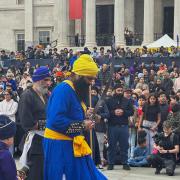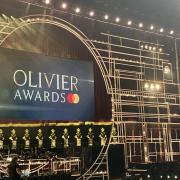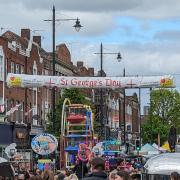
According to a survey taken for The Guardian in 2016, over half of the people in the United Kingdom do not have a religion. As a consequence, whilst Christmas is still a sacred religious time to some, celebration in the United Kingdom has become increasingly secular. The common features of a modern Christmas are an exchange of gifts, an adorned fir tree and an abundance of food and drink. Whilst some of these things have religious relevance, many, if not most, do not. Why is this, and what are the origins of the things that make a modern Christmas?
Many years before Jesus was introduced as the foundation of the Christmas story, the earliest Europeans celebrated key themes of light and birth in the darkest days on Earth - winter. They celebrated the days to come, where the worst of the freezing temperatures were behind them and extended hours of daylight were ahead. By the end of December, most of the cattle were slaughtered, therefore giving a plentiful supply of meat. Beer and wine was also ready to be drunk at this time of year, so overall it was a time of celebration.
The Christmas celebrated by most nowadays also contains elements of the Roman Saturnalia, which honoured the god of agriculture, Saturn. It was a time of plentiful food and drink and social norms were turned on their head: slaves became masters and peasants being put in charge of the city. It is believed by some that Pope Julius I chose the date of the 25th December in an effort to match the traditions of the pagan Saturnalia festival, despite The Bible never confirming the date.
It was not until the 19th century that Americans began to celebrate Christmas. It was kickstarted in 1819, when Washington Irving wrote The Sketchbook of Geoffrey Crayon, which consisted of stories about the celebration of Christmas in a classic English Manor House. It is about a squire who invites peasants into his home for the holidays, mirroring the themes of charity and warm-heartedness found in A Christmas Carol by Charles Dickens in 1843. In Irving's version, the peasants and the wealthy had no conflict, demonstrating a belief that Christmas should be a kind and giving holiday that brings people together, often those who would not usually mingle due to social status or wealth.
If you have read the story of the three wise men, it is easy to understand where the themes of giving come from. However it is harder to identify where one of the most significant elements of the 21st century celebration comes from: the arrival of Santa Claus. He can be traced back hundreds of years, to a monk named St Nicholas born around 280 A.D near Myra, in modern-day Turkey. He was admired for his pity and kindness to all, and became the basis of many legends, such as giving away all his inherited wealth and travelling the countryside to help those sick and in poverty. A best-known story is him saving three sisters from being sold into slavery by their father, so he could provide them with a dowry to be married.
His legend moved to America toward the end of the 18th century, when two New York newspapers wrote about the Dutch families gathered to grieve his death. The name evolved here from Sinter Klaas, to the shortened Dutch version for Saint Nicholas, Sint Nikolaas.
In 1804, a member of the New York Historical Society, released woodcuts of St Nicholas at the annual meeting. The background showed scenes of stockings filled with toys and fruit adorned on the fireplace. Further on in 1809, Washington Irving helped popularise the stories of Santa Claus when he referred to St Nicholas as the patron saint of New York in one of his books. As his popularity grew, he was described as "rascal" with a blue three corned hat, red waistcoat and yellow stockings wearing a "huge pair of Flemish trunk hose."
The modern Christmas has taken ideas with a wide range of origins and shaped them into something of their own, taking most significantly, the themes of giving and kindness to all. These foundations may be centuries old, yet somehow have been passed through generations, evolving and adapting all the time. As things look now, Christmas will continue to be a time of celebration for centuries to come.
Molly Russell, Sydenham High School


























